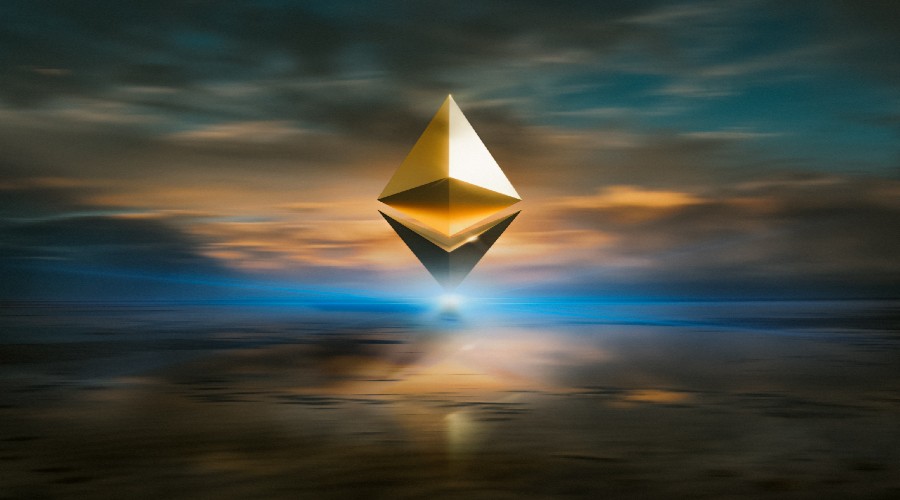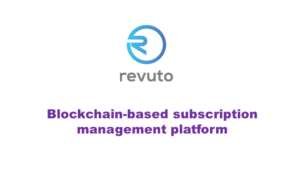
Ethereum is an open-source blockchain network that has a decentralized public ledger for verifying and recording transactions. It’s a programmable blockchain network on which users can build decentralized applications (DApps) similar to software applications running on a computer.
Ethereum was born in 2013 when Vitalik Buterin wrote a white paper proposing Ethereum’s development. Vitalik gathered a team of 7 more co-founders: Gavin Wood, Anthony Di Iorio, Charles Hoskinson, Mihai Alisie, Joseph Lubin, Amir Chetrit, and Jeffrey Wilcke. Ethereum was officially launched in July 2015 with its native cryptocurrency called Ether (ETH) which is used as a medium of exchange, like Bitcoin. Since then, it’s been used to create DApps and tokens in Ethereum’s programming language called Solidity.
Table of Contents
What can Ethereum be used for?
Ethereum can be used as a blockchain platform on which developers can code basically anything. From financial exchanges, smart contracts, entertainment applications, a marketplace to whatever a developer can think of. Ethereum is a leading platform in the majority of top blockchain projects such as DeFi, NFT, DEXs, Stablecoins, etc.
Gas fees
When a user wants to make a transaction with ETH, he has to pay a fee, called gas. Ethereum miner, who validates the transaction, receives that fee. When the network activity is high, or in other words, lots of people are trying to make a transaction, gas fees can run insanely high. You may have already heard that Ethereum has issues with high fees which are a result of network congestion. That is because miners are choosing transactions with the highest gas fees, leaving users bidding against each other to be included in a block. A single block is limited to a maximum of 30 million gas which is not enough to sustain demand in times of high network activity. To give you an example, on this day, August 19th, Ethereum’s average gas price is at 53 gwei which is within the annual average. On June 11th of 2020, it was 709.71 gwei which drastically slowed Ethereum transactions.
| Unit Name | Wei Value | Number of Wei |
|---|---|---|
| Wei | 1 wei | 1 |
| Kwei | 1e3 wei | 1,000 |
| Mwei | 1e6 wei | 1,000,000 |
| Gwei | 1e9 wei | 1,000,000,000 |
| Twei | 1e12 wei | 1,000,000,000,000 |
| Pwei | 1e15 wei | 1,000,000,000,000,000 |
| Ether | 1e18 wei | 1,000,000,000,000,000,000 |
The major change happened on August 5th when Ethereum activated transaction fees upgrade EIP-1559 which algorithmically determines the base price you pay for a transaction to be included in the block with the addition of tips if you want to be included faster. Another change in the upgrade is the burning of mined ETHs which makes Ethereum closer to being deflationary.
Ethereum 2.0
Ethereum 2.0, also known as Serenity, is one of the most anticipated upgrades in the crypto world. It is actually a set of three upgrades whose aim is to make Ethereum more scalable, secure, and sustainable:
- The Beacon Chain
- Already launched in 2020, brought staking to the Ethereum ecosystem which laid foundations for future upgrades
- The Merge
- Expected in 2021, its where The Beacon Chain will be merged with Mainnet which will result in the transition from Proof-of-work to Proof-of-stake consensus model.
- Shard Chains
- Expected in 2022, it will spread the network’s load which will expand Ethereum’s capacity to process transactions and store data.
Advantages of Ethereum
Community

Ethereum has developed an ecosystem with a huge community of supporters as well as the largest developer community in the world. Ethereum made its name in the Crypto industry which will definitely have a positive impact on future development.
Diversability
Ethereum’s open-source blockchain platform supports Smart Contracts, DApps, Decentralized Finance, and many more projects which can be used in different industries. Thus, Ethereum is well diversified from the risk of failure of an individual industry or project.
Utilization
As said before, some of the biggest crypto projects are built on Ethereum’s blockchain which is the most used network in the crypto space. With Ethereum being the second biggest cryptocurrency after Bitcoin, its popularity and utilization are expected to grow further together with demand.
Disadvantages of Ethereum
Scalability
High gas fees and often congestion make Ethereum not ready for high transaction volume. Those should be fixed with Ethereum 2.0 but we are yet to see how that will play out.
Solidity

Developers have to code in Ethereum’s programming language which can be quite challenging since the majority of new developers are not familiar with Solidity. That can result in smart contracts written with vulnerabilities that can be exploited by hackers. Solidity is repeatedly labeled as unsecured and unready.
Conclusion
Ethereum managed to fulfill a need for an open-source developing platform for building decentralized applications. Deploying smart contracts opened up new possibilities which are still being discovered. Applications are almost infinite. The key to further development is in the implementation of a more sustainable and efficient Ethereum 2.0 system. Our hopes are with Vitalik Buterin and his team to continue the decentralization of the world.


